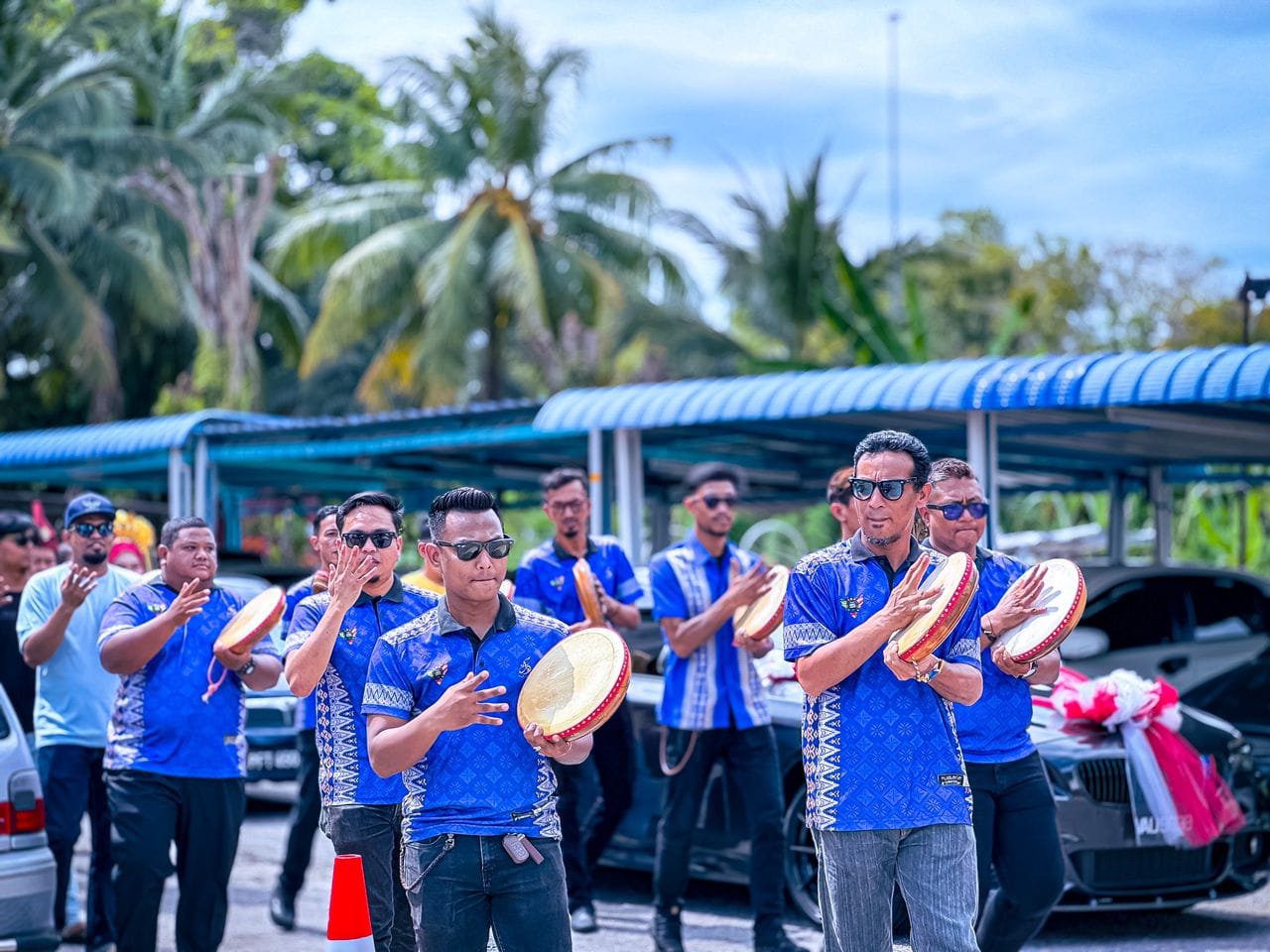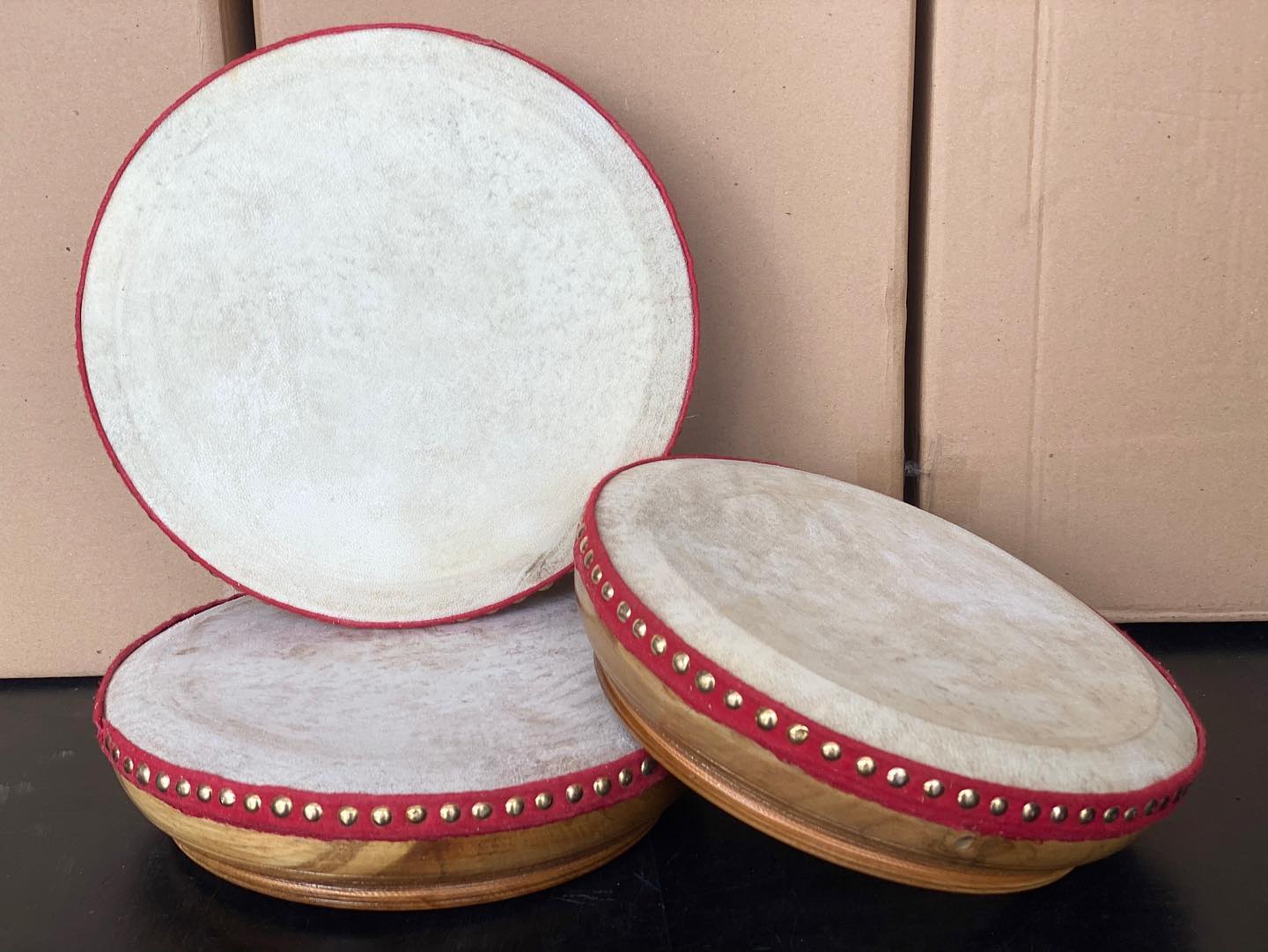ARTS AND CULTURE INFORMATION GATEWAY
Immerse yourself in the colorful world of art and culture! From traditional heritage to contemporary works, discover uniqueness that reflects the nation's identity and identity
KOMPANG PERAK
Picture
4
Video
Available
Today's Visitor
27
Number of Visitors
1110
Introduction and history
The Kompang is a percussion instrument categorized as a membranophone, specifically a single-headed drum. It is believed to have originated from the Middle East, as evidenced by the Arabic lyrics often sung during its performance, which serve to deliver praises and salutations to the Prophet Muhammad (PBUH).
In the past, Arab traders used the Kompang to attract customers by producing rhythms and beats through its striking. It also served as a medium to recite praises and salutations (selawat) to the Prophet Muhammad (PBUH), making it an instrument deeply associated with religious values.
In modern times, the role of the Kompang has expanded to be used in various events to enliven the atmosphere. Kompang music is often performed to accompany solo or group singing, such as nasyid and marhaban, especially during traditional and religious ceremonies. Events like wedding processions, Quran recitations, and official ceremonies involving dignitaries are frequently enhanced by the rhythmic beats of the Kompang. This highlights its role not only as an element of entertainment but also as a symbol of respect and the beauty of Malay traditions.
Furthermore, the Kompang plays a significant role in strengthening cultural identity and fostering community unity. Its rhythm creates a cheerful and harmonious ambiance, making it an essential element in various celebrations and social gatherings. Beyond entertainment, the Kompang is also utilized as a tool to educate and impart traditional and religious values to the younger generation.
This performing art does not have any specific attire or costume associated with its performance. However, during formal events, male Kompang Perak players typically wear traditional Baju Melayu with a Samping (waist cloth) and accessorized with either a songkok or a Tanjak. Female Kompang players, on the other hand, usually wear Baju Kurung in matching colour tones.
The making of a kompang involves several crucial steps to ensure the instrument produces high-quality sound and provides comfort for its players. The process begins with selecting an appropriate kompang size based on the player’s age. The sizes vary according to age groups: 30 cm for players aged 12 and below, 32.5 cm for ages 13 to 14, 35 cm for ages 15 to 16, and 37.5 cm to 40 cm for adults. This selection is important to ensure player comfort and produce quality beats.
The basic structure of the kompang consists of the baluh, a round frame made from durable hardwood such as Cengal, Halban, or jackfruit tree, with a drumhead made of female goat skin. The drumhead is affixed to the baluh using adhesive and secured with nails to maintain tension. To adjust the tension of the drumhead, a process known as sedak is applied. Sedak involves the use of small rattan strips or wires placed between the drumhead and the baluh. The primary function of the sedak is to ensure the drumhead is sufficiently taut, enabling the kompang to produce clear and pleasing sounds when struck.
Reference Source
Bahan Bacaan
Abdul Wahab, F. A. (2017). Kompang The Malay Drums. UiTM Press Sdn. Bhd.
Ahmad Hakimi Khairuddin, & Zahir Ahmad. (2006). Perkembangan Persembahan Hadrah Di Tiga Tempat: Pelestarian dan Pembangunan Warisan Seni Budaya Melayu. Akademi Pengajian Melayu, Universiti Malaya.
Erwan Sulaiman. (2011). Kompang. Dewan Bahasa dan Pustaka.
Ketut Wisnawa. (2020). Seni Musik Tradisi Nusantara. Nilacakra.
Matusky, P. A., & Tan, S. B. (2017). Muzik Malaysia: Tradisi, Klasik, Rakyat Dan Sinkretik. Penerbit Universiti Malaya.
Md Jais Ismail, Loo Fung Chiat, & Mohd Sham Kamis. (2019). Koordinasi Menyanyi Sambil Bermain Kompang Kanak-Kanak Menggunakan Pendekatan Euritmik. Jurnal Penyelidikan Sains Sosial (JOSSR), 2, 19 - 31.
Mohd Hassan Abdullah. (2004). Idiosyncratic Aspects of Malaysian Music: The Roles of the Kompang in Malay Society. Universiti Pendidikan Sultan Idris, Malaysia.
Mohd Hassan Abdullah. (2005). Kompang: An organological and ethnomusicological study of a malay frame drum. International Centre for Music Studies, The University, Newcastle upon Tyne, United Kingdom.
Encik Ngah Sidin bin Hamzah, Kumpulan Sewang Ulu Geroh , Kampung Ulu Geroh Gopeng, Perak.
Location
State JKKN Contact Information
Encik Yufazli Yusof
Cultural Officer
Jabatan Kebudayaan dan Kesenian Negara Perak
Kompleks JKKN Perak,
Lot 20561@20565 Jalan Caldwell,
Off Jalan Raja Di Hilir,
30350 Ipoh,
PERAK DARUL RIDZUAN
05-253 7001 / 05-254 1027
Use the form below to contact the Informant/Figure/Editor/Researcher directly. We will respond to your inquiry as soon as possible!

 umpulan Sewang Ulu Geroh, Kampung Ulu Geroh Gopeng, Perak
umpulan Sewang Ulu Geroh, Kampung Ulu Geroh Gopeng, Perak








